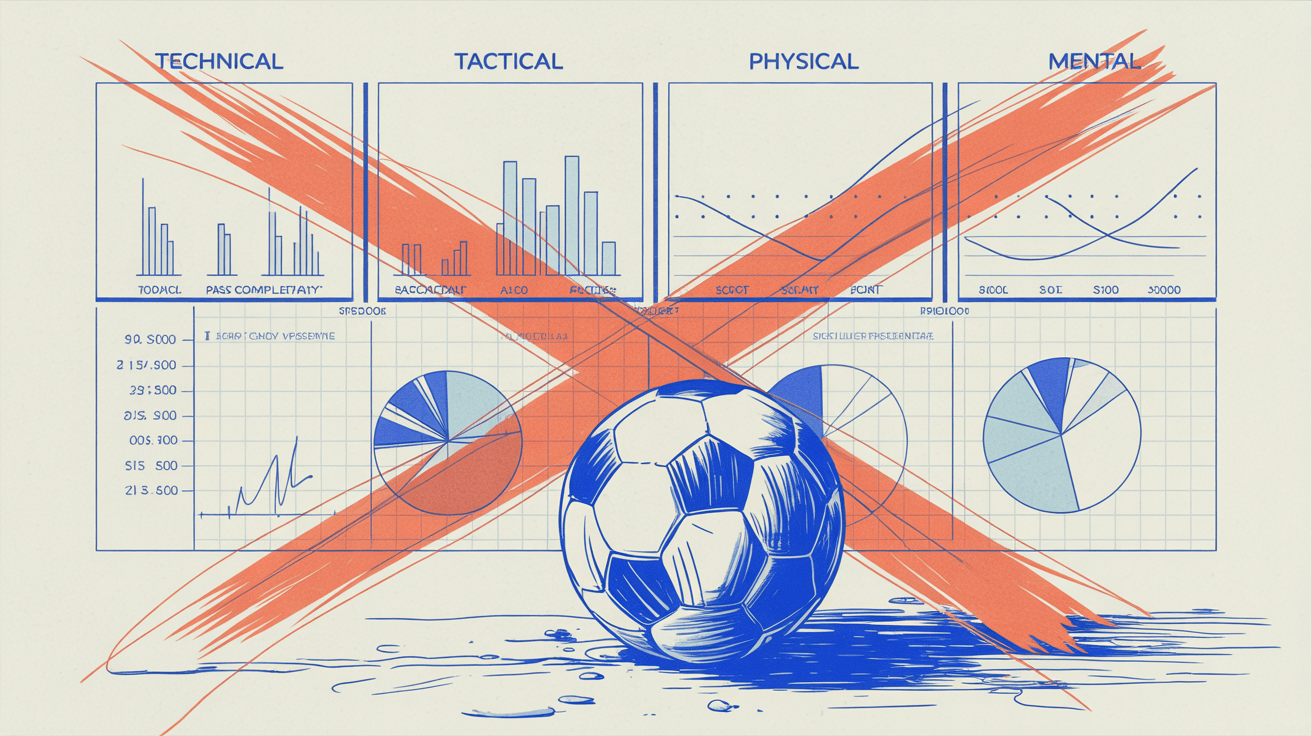One of the fundamentals of a good scouting infrastructure is a clear and consistent rating system. The rating system is used by scouts to assess the level and/or suitability of a player for their club. What is important in setting up such a rating system? And how can you make sure everyone uses and interprets it correctly?
Different rating systems
From club to club, many different rating systems are used, such as the following ones.
- A/B/C/D.
- 5/6/7/8/9.
- Green/orange/red.
Many clubs assess the current and potential level of a player, which is especially relevant for younger players. An 18-year-old making his debut might receive a C, 6, or orange for their current level, but could improve to B, 8, or green in the future.
Common pitfalls
Clubs can make a variety of mistakes in choosing or applying their rating system. Below, you’ll find some of the most common pitfalls.
Mixing up player level with follow-up action
When evaluating a player as a scout, you want to assess their level by assigning a rating to them. The rating system the club uses is designed to get a quick overview of the opinion of a scout about a player. The written report provides more context about that rating.
Assigning a rating to a player should not be confused with picking a follow-up action on them. Some clubs don’t define A, 9, or green in their rating system as a level of their club (such as the top player in their league, for example) but a follow-up action, such as ‘sign whenever possible’, ‘follow closely’ or ‘don’t spend any more time on’.
Evaluating a player and assigning a follow-up action are two separate things.
As a scouting department, the difference between evaluating a player’s level with a rating and assigning a follow-up action to a player are two separate things. Both are relevant and they should not be confused with each other.
Offering too few options
If the rating system only consists of A/B/C/D, scouts only have four options to pick from. Let’s say the following meanings are assigned to those four ratings.
A = top player or better for us
B = first eleven player for us
C = substitute player for us
D = squad player or worse for us
That means that a scout from let’s say a mid-table Bundesliga club, who evaluates players from another mid-table Bundesliga club, will evaluate a lot of players with a ‘B’ rating. The scout probably signaled a quality difference between some of those players, even though they received the same ratings. This means valuable information gets lost in the process.
Using a sliding scale
If you relate the meaning of a rating to your current club’s level, like ‘Orange = top player for us’, it means the scout relates the level of the player to your current club’s level.
As we all know, the level of every club regularly varies. Clubs have performed better or worse during the years. That means that a rating assigned to a player six months ago has to deal with either inflation or deflation if the level of the club has changed.
Let’s assume a scout of a mid-table Ligue 2 club assigns a rating to a player from Belgium. Six months later, his employee is not a mid-table Ligue 2 club anymore, but battling for promotion to Ligue 1. That would mean the same player could now be orange/7/C instead of green/8/B for them.
In other words, the rating system is a sliding scale, which is far from ideal when you want to make sure player evaluations have a long expiration date.
How do we handle rating systems?
When we cooperate with a client club, we always adjust to their rating system (among other things). Our scouts receive a briefing about how the rating system works and apply it as well as possible. This way, we adjust to the club, and not the other way around.
We always adjust to a club’s scouting setup including rating system
At the same time, we have our thoughts about an ideal rating system in general. This led to the creation of a rating system that is based on the level of clubs all over the world. We use our ‘own’ rating system in sample reports that are not club-related.



